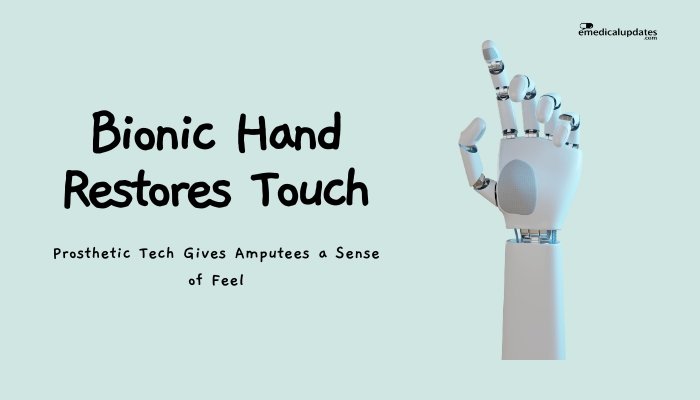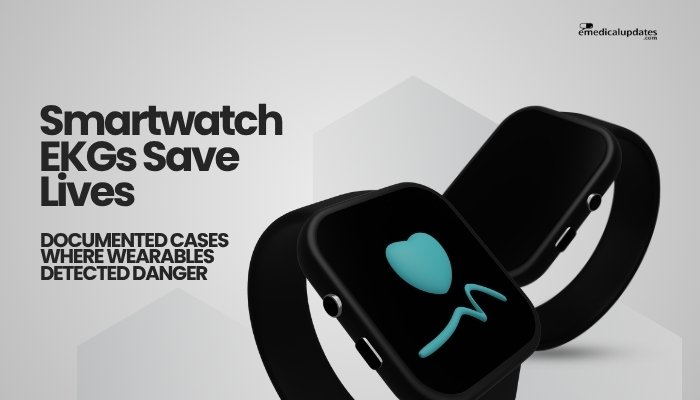Introduction
For individuals who have lost a hand, modern prosthetics offer impressive capabilities like powered grip and refined motor control. Yet, traditional prosthetic devices rarely replicate the crucial sense of touch, making even routine tasks challenging.
Now, a new class of bionic hands integrates sensors and neural interfaces to provide tactile feedback, letting wearers perceive pressure or texture and improving dexterity. This article explores how these bionic hands work, the benefits of sensory feedback, and what the future holds for prosthetic technology.

The Importance of Touch in Hand Function
Touch and Motor Coordination
When we grasp an object, tactile feedback instantly guides us to adjust pressure or reposition our grip. Without it, tasks like holding a soft cup or feeling a pen’s position become guesswork.
Traditional Prosthetic Limitations
- One-Way Control: Standard prosthetics rely on muscle signals or myoelectric sensors to move the device, but the user has no feedback about how tight or gently they’re gripping.
- Learning Curve: Amputees must watch their prosthetic visually and rely on trial and error, making activities far more cumbersome and less precise.
New Bionic Hand Technology
Integrating Sensors
Engineers embed pressure or force sensors in the prosthetic’s fingertips or joints. These sensors measure:
- Contact and Grip Strength: The force applied to an object.
- Texture: Some advanced prototypes sense friction or slip events, crucial for handling delicate items.
Neural Interfaces
To convey these signals to the user’s brain, the device must connect with the nervous system:
- Peripheral Nerve Interfaces: Surgeons implant electrodes near the user’s remaining nerve endings in the arm, letting electrical signals from the prosthetic communicate with sensory pathways.
- Transcutaneous Methods: Other designs pass signals through the skin, reducing surgical invasiveness but sometimes limiting precision.
Clinical Trials and Real-World Results
Early Human Trials
Volunteers wearing these prototypes often report:
- Feeling Pressure or Texture: “I can feel how hard I’m squeezing,” enabling them to pick up objects like eggs without cracking them.
- Faster, More Intuitive Movements: Less visual monitoring needed. Some can adapt their grip reflexively, as a natural hand would.
Improved Quality of Life
With restored tactile cues, tasks such as buttoning shirts, handling utensils, or performing chores become less frustrating. Many users also note heightened emotional connection, describing the prosthetic as feeling more “alive.”
Benefits of Sensory Feedback in Prosthetics
- Enhanced Dexterity: Minimizing mistakes like dropping items or applying excessive force.
- Reduced Cognitive Load: Freed from constant visual checks, amputees report less mental fatigue.
- Improved Psychological Well-Being: Greater confidence in daily tasks fosters independence and self-image.
Ongoing Challenges
Long-Term Reliability
These advanced devices must remain robust over years of use. Sensor calibration drifts, hardware wear, and potential nerve-electrode interface complications require careful design.
Cost and Accessibility
High-end bionic limbs with neuromuscular interfaces can be expensive. Wider adoption demands scaling production and achieving insurance coverage.
Surgical Expertise
Attaching neural interfaces typically involves delicate procedures. Not all medical centers can support this advanced surgery. Reimbursement, training, and standardization might help.
The Future of Bionic Touch
Further Refinement
Researchers aim to:
- Expand Sensations: Distinguish different textures (rough vs. smooth), temperature, or even pain signals.
- Wireless or Minimally Invasive Links: Reducing cables or large external controllers to enhance user comfort.
Potential for Bidirectional Brain-Computer Interfaces
As neural engineering progresses, prosthetic arms might seamlessly integrate with the brain, enabling near-natural movements and feelings—closing the gap between artificial and biological limbs.
Frequently Asked Questions
- Do these hands really let someone feel everything?
- Sensation is limited compared to a natural hand; typically, it’s pressure or basic texture cues. Research aims for more advanced tactile details.
- How soon could such prosthetics be widely available?
- Some advanced prototypes exist now, but mainstream accessibility likely remains a few years away due to cost, surgical complexity, and regulatory clearance.
- Does it require amputation above a certain level?
- The location of the amputation and remaining nerve structures matter. The more intact nerves, the more precise the potential feedback.
- Is it covered by insurance?
- Coverage is inconsistent and often partial. It depends on local health policies and recognized medical necessity.
- What about battery life or charging?
- Most incorporate rechargeable batteries for motors and electronics. Extended usage between charges is a design priority.
Conclusion
Bionic prosthetics that restore a sense of touch represent a leap forward in allowing amputees to perform daily tasks with greater ease and confidence. By merging sophisticated sensors with neural interfaces, these devices replicate partial tactile feedback lost through limb removal. Although high costs, surgical requirements, and continued R&D pose challenges, each successful demonstration underscores a future in which prosthetic hands no longer merely mimic grip motions but empower users with genuine tactile sensation. As the technology advances and becomes more accessible, thousands of amputees may soon experience a significantly improved quality of life—one step closer to making artificial limbs functionally indistinguishable from the real thing.
References
-
- Marasco PD, et al. (2019). “Restoring the sense of touch via a neural interface in prosthetic arms.” Sci Transl Med.
-
- Tan D, et al. (2021). “Sensory feedback in robotic prosthetics: challenges and solutions.” Annu Rev Biomed Eng.
-
- Antfolk C, et al. (2022). “Tactile sensors and nerve interfaces: bridging the gap in prosthetic user experience.” IEEE Trans Neural Syst Rehabil Eng.
-
- WHO. (2023). “Global data on limb loss and prosthetic advancements.”






